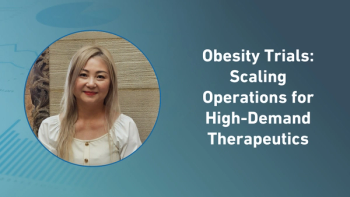
TransCelerate's Risk Based Monitoring Goes on Tour
Next week at DIA, two of TransCelerate?s Risk Based Monitoring workstream members will take their newly released methodology to the people.
SPOTLIGHT EVENT
Cambridge, MassachusettsDownload Brochure
RELATED
-
- Risk-Based Approaches
- ICON Exec Discusses ICONIK MonitoringMore in Risk-Based Monitoring
Next week at DIA, two of TransCelerate’s Risk Based Monitoring workstream members will take their newly released methodology to the people. On Wednesday, June 26 at 1:45, Craig A Wozniak, Head, Americas Clinical Operations for GlaxoSmithKline, will present “TransCelerate: Overview of Organization and Risk-based Monitoring Methodology” and Michael Luker, Senior Advisor at Eli Lilly, will discuss “Pilot Implementation: Practical Experience to Date.”
After DIA, various members will continue the tour dates, for those who can’t make the Boston trip. Wozniak will also present at
Luker, along with Jeff Kasher, Vice President of the Development Center of Excellence and the TransCelerate Operations Committee member for Eli Lilly, took the time to speak with Applied Clinical Trials about the methodology paper released June 3.
Kasher explained the risk-based monitoring (RBM) evolution with TransCelerate. The EMA, FDA, and MHRA put guidance papers out on risk-based monitoring in 2011. And prior to that specific companies, including Lilly, have taken different approaches to risk-based monitoring; with several companies publishing those approaches. When TransCelerate was formed in September 2012, one of its initial five goals was to address risk-based monitoring. To that end, it had discussions with FDA, inclusive of Janet Woodcock, on the five initiatives. According to Kasher, the regulatory agencies have seen the value of risked-based monitoring. Following that, TransCelerate submitted its paper to both agencies, the EMA and the FDA, and incorporated their feedback before the paper was released. Said Kasher, “We provided [the paper] to them because our goals are aligned. We want to do better clinical trials. We want to accelerate clinical trials, and risk-based monitoring is an opportunity to ensure we’re going to do that.”
“What’s different about TransCelerate BioPharma’s position paper is it’s more of an industry how to. It includes specific examples. It includes tools. And we want people to use and apply the methodology. We’ll learn from our experience; and then we’ll enrich the paper, the tools based on that learning,” continued Kasher.
For the details on the paper, as well as the tools being discussed, you can link
TransCelerate RBM: Early Reaction
Lilly, along with eight other TransCelerate members, are piloting the methodology. These experiences will be what Luker will discuss on the road tour. Luker noted that the initial application of the methodology at Lilly has proven to be a very practical methodology. “The tool set that’s included, the risk assessment, the risk indicators, the integrated quality managed plan approach, those are all very practically applicable tools to a clinical trial.” He believes that the road tour will go well, based on his own internal dealings with different functional groups at Lilly during the pilot implementation.
“I’ve received more positive reaction out of this initiative than just about any other change initiative I’ve been involved with. Most transformational change projects or programs I’ve been involved with in the past have been 80/20 on the resistance side. This one has been more 80/20 on the positive interest and curiosity side.” Luker believes that the positiveness comes from the fact that people fundamentally believe this is a better way to monitor. “The tenor of those questions has been in a, ‘I’m curious. I want to figure this dimension out because I like what you’re saying.’ And that, to me, has been the difference.”
Lilly made the decision to move into implementation immediately upon completion of the methodology. Luker explained this move directly from theory to practical application has helped make it more real for those affected, and using a practical methodology and tool set that changes the way they work, also helps people understand it first, and believe in it second.
For those about to hear the RBM gospel according to Luker on the tour, “To whatever degree of skeptical curiosity there is out there, as folks get into actually implementing the methodology, that’ll dissipate,” Luker said.
Newsletter
Stay current in clinical research with Applied Clinical Trials, providing expert insights, regulatory updates, and practical strategies for successful clinical trial design and execution.





.png)



.png)



.png)
.png)
